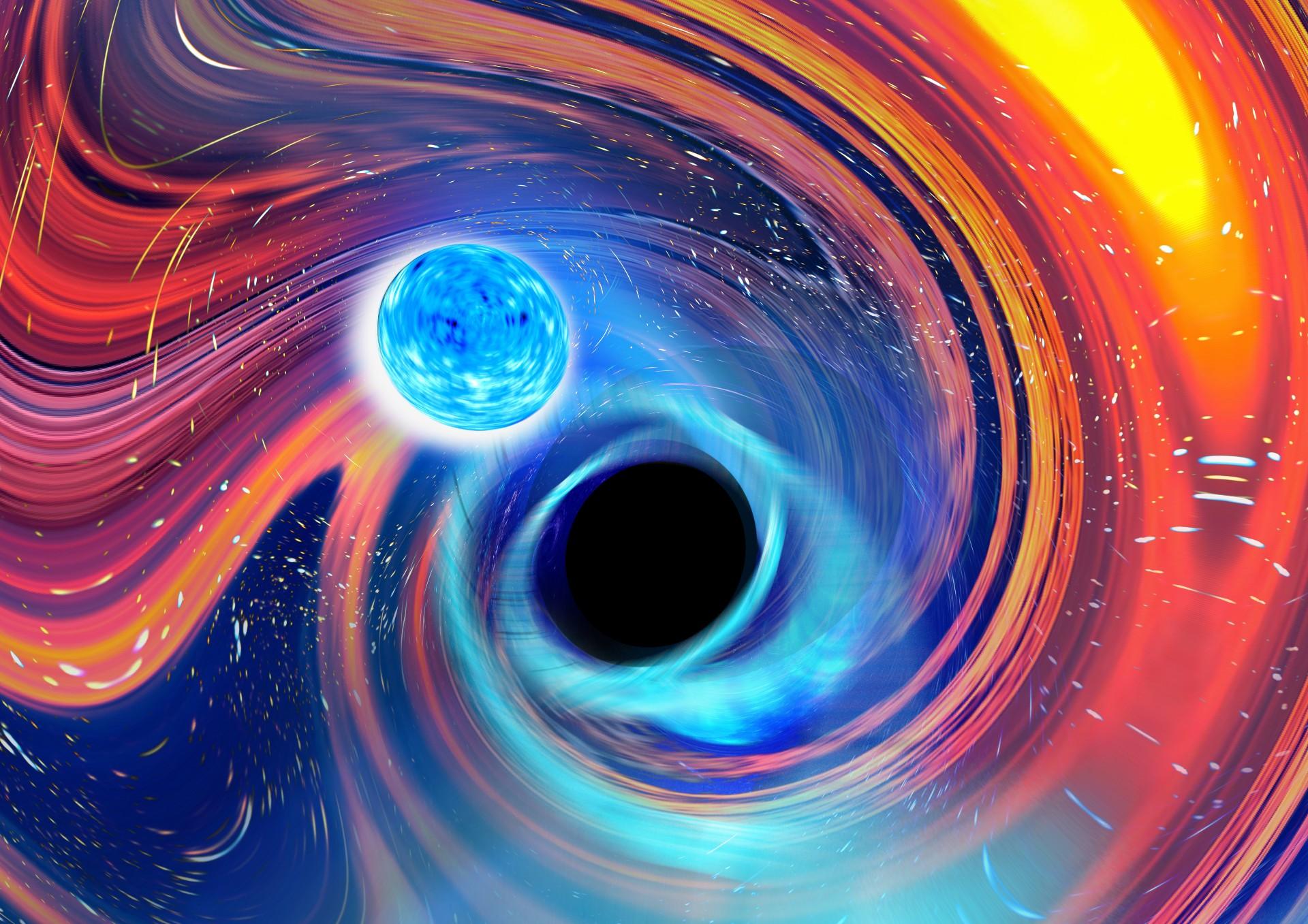First detection of a collision between a neutron star and a black hole

Artist’s impression of a neutron star and black hole about to merge. Carl Knox, OzGrav-Swinburne University.
A team of international scientists including experts from the University of Adelaide has revealed a new phenomenon in the Universe. They have detected the death spiral and merger of the two of the most extreme objects in the Universe, a neutron star and a black hole.
The discovery will allow scientists studying gravitational waves to further understand the nature of the space-time continuum and the building blocks of matter.
Postdoctoral Researcher Dr Daniel Brown from the University’s School of Physical Sciences is a member of the ARC Centre of Excellence for Gravitational Wave Discovery (OzGrav) team.
“Observing a neutron star-black hole merger fills in another missing piece in our collection,” he said.
The team used data collected by the Laser Interferometer Gravitational-Wave Observatory (LIGO), a large-scale physics experiment and observatory in the US and the VIGO detector in Europe to detect the cosmic gravitational waves emitted by the discovery. The event occurred before the dinosaurs roamed Earth but the gravitational waves have only just reached us.
“Black holes and neutron stars are two of the most extreme objects ever observed in the Universe. They are born from exploding massive stars at the end of their lives.”Dr Daniel Brown
An artist’s impression of a neutron star and black hole about to merge. Credit: Carl Knox, OzGrav-Swinburne University.
“OzGrav expertise and technology played a crucial role in enhancing the performance of the LIGO detectors to enable these fascinating new measurements,” said Dr Brown.
“Researchers and students spent over 1000 days at the LIGO sites during the last observation run installing new hardware and tuning up the performance.
“A key contribution was the installation of new hardware to generate what is known as ‘Squeezed light’, which is a special quantum state of light that reduces the noise in our measurements. The Heisenberg uncertainty principle suggests there is a limit to how sensitive we can make the detectors, but by using squeezed light we can improve the chances of successful detection.
“Black holes and neutron stars are two of the most extreme objects ever observed in the Universe. They are born from exploding massive stars at the end of their lives."
Typical neutron stars have a mass of one-and-a-half-times the mass of the Sun. However, all of that mass is contained in an extremely dense star, about the size of a city. One teaspoon full of matter from a neutron star weighs as much as all of humanity.
Neutron stars and black holes orbit around each other at around half the speed of light before they collide and merge. This puts the neutron star under extraordinary strain, causing it to stretch and deform as it nears the black hole. How much a neutron star stretches depends on the type of matter it consists of which can be decoded from the gravitational waves. This also indicates what type of material neutron stars are comprised of.
Along with University of Adelaide, the OzGrav team includes experts from Monash University, Swinburne University of Technology, the University of Western Australia, ANU and the University of Melbourne.
Dr Rory Smith, an astrophysicist from Monash University, co-led the international team of scientists in this discovery.
“It’s an awesome milestone for the nascent field of gravitational-wave astronomy. Neutron stars merging with black holes are amongst the most extreme phenomena in the Universe. Observing these collisions opens up new avenues to learn about fundamental physics, as well as how stars are born, live and die.”
Pairs of neutron stars and black holes have been predicted to exist by theorists for decades, but had long avoided detection.
The OzGrav team published their findings in Astrophysical Journal Letters.
Media Contacts:
Dr Daniel Brown, School of Physical Sciences, The University of Adelaide. Mobile: 0423644123, Email: daniel.d.brown@adelaide.edu.au
Crispin Savage, Senior Media and Communications Officer, University of Adelaide. Mobile: +61 (0)481 912 465, Email: crispin.savage@adelaide.edu.au
